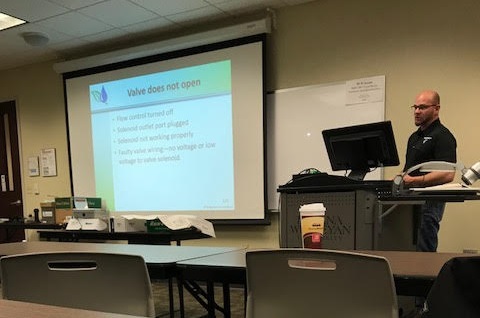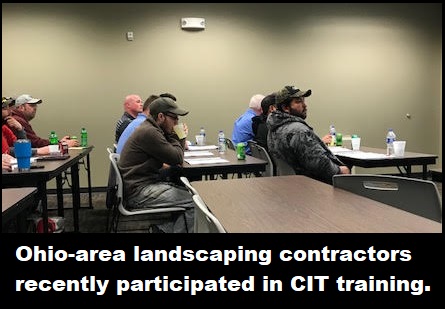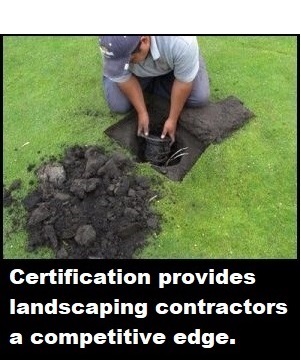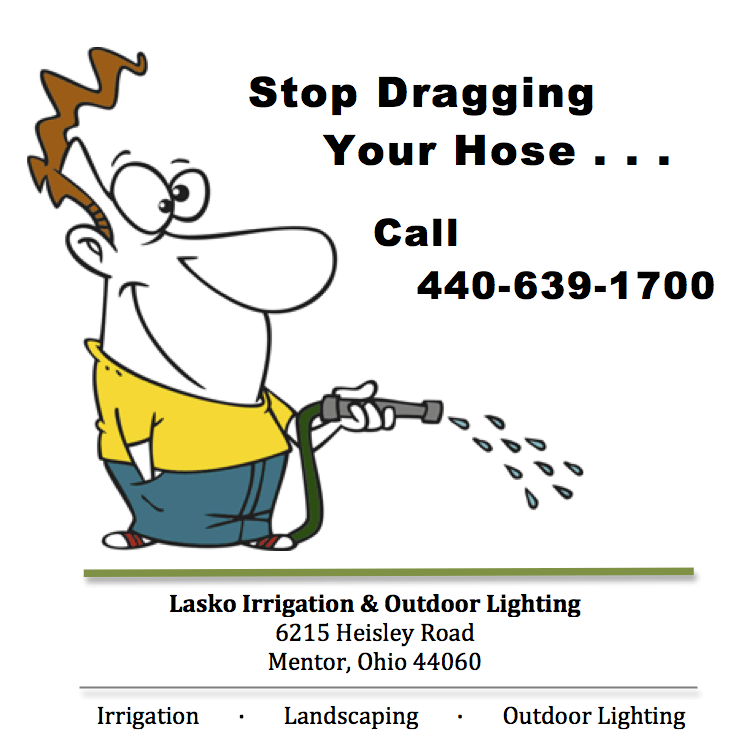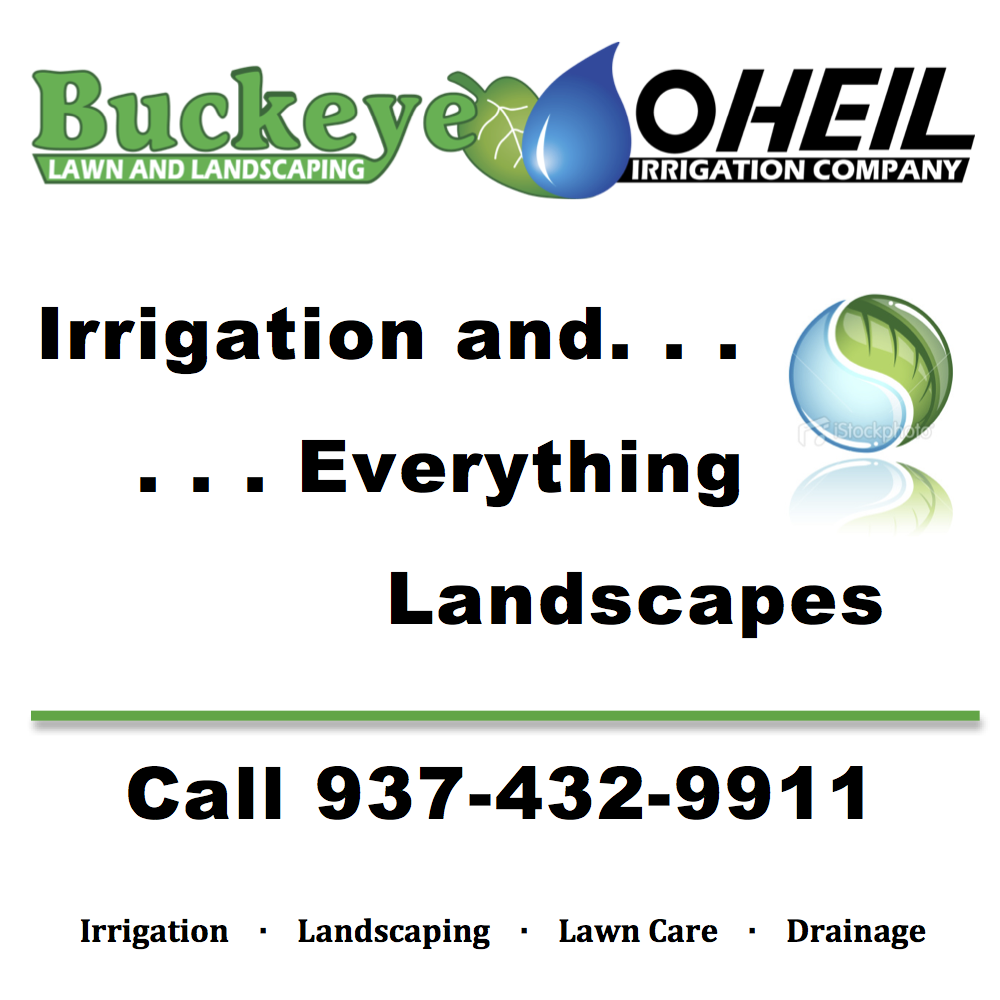
by Tom Barrett | Dec 5, 2018
Water for Energy for Water
Water and energy are inextricably linked.
It takes a significant amount of water to create energy. Likewise, it takes a significant amount of energy to extract, move and treat water.
U.S. power plants withdraw 143 billion gallons of fresh water every day. That’s more than the amount withdrawn for irrigation and three times as much as is used for public water supplies.
Water and Electricity
When we think of water and electricity, hydropower is usually the first thing that comes to mind. But power plants that use coal, oil, nuclear energy or natural gas are also water-dependent.

By burning coal or natural gas (or by maintaining a fission reaction), these power plants generate heat. The heat is then used to boil water, produce steam, and turn turbines. Much of the water used by these plants is needed to cool the steam they generate.
Withdrawal vs. Consumption
In order to better understand how much water is used by power plants, we must first define some terms.
 Water “use” by power plants comes in two forms: withdrawal and consumption. Withdrawal refers to the amount of water a power plant extracts from a lake, river, aquifer, or other water source. Power plants that use “once-through cooling” technology withdraw large volumes of water a single time. They then discharge it directly to waste.
Water “use” by power plants comes in two forms: withdrawal and consumption. Withdrawal refers to the amount of water a power plant extracts from a lake, river, aquifer, or other water source. Power plants that use “once-through cooling” technology withdraw large volumes of water a single time. They then discharge it directly to waste.
Withdrawal is important for several reasons:
- Water intake systems can trap aquatic wildlife
- Water withdrawn for cooling (but not consumed) is returned to the environment heated, potentially harming wildlife
- Power plants that tap groundwater for cooling can deplete aquifers.
Consumption refers to the water that evaporates in the cooling process. Consumption reduces the amount of water available for other uses, such as sustaining ecosystems. Plants that use “recirculating cooling” technology tend to have lower rates of water withdrawal, but consume much more of that water through evaporation.
So How Much Water Do Power Plants Use?
A 2013 report published in Environmental Research Letters found that, in the year analyzed (2008), U.S. power plants:
- Withdrew some 50 trillion gallons of water
- Consumed 1.6 trillion gallons of that water
- Used freshwater (non-ocean) sources for 86 percent of those water withdrawals and 96 percent of the water they consumed.
This means that about 100 billion gallons of freshwater is withdrawn daily and several billion gallons consumed.

How does this compare with our other water needs, say, agriculture?
When it comes to withdrawals, power plants are number one. According to the most recent available data provided by U.S. Geological Survey, the power sector is responsible for more than 40 percent of freshwater withdrawals.
On the consumption side, agriculture is the biggest user. (Much of the water used to irrigate fields doesn’t make it back out.)
What Can Be Done?
As climate change continues to affect precipitation and temperature patterns across the country, water-dependent energy production could be inhibited.
 There are several ways we can address the water-related impacts of energy use:
There are several ways we can address the water-related impacts of energy use:
- Designing appliances, buildings, and vehicles to be more energy efficient. This is the simplest and most cost-effective solution. The less energy used, the less water required.
- Retrofitting old coal or nuclear power plants with more water-efficient cooling systems. According to scientists, this could potentially double water consumption, but could reduce water withdrawals to a mere fraction of current use.
- Encouraging (i.e., incentivizing) the expansion of renewable technologies (such as wind and solar energy) that require no water usage.
Sources:
Union of Concerned Scientists
National Conference of State Legislatures
U.S. Dept of Energy

by Tom Barrett | Nov 6, 2018
CIT Training Sponsored by Wolf Creek
CIT training is scheduled from 8:00 a.m. to 5:00 p.m. at Wolf Creek’s Columbus branch, located at 6700-B Huntley Road in Columbus, Ohio.
To register, contact your Wolf Creek representative, or click the registration box above. Space is limited; cost for the training is $100 per attendee.
 Don’t miss out on this opportunity to add instant credibility to employers and increase your marketability, all while demonstrating your commitment to efficient water management!
Don’t miss out on this opportunity to add instant credibility to employers and increase your marketability, all while demonstrating your commitment to efficient water management!
What Exactly Does a CIT Do?
Certified Irrigation Technicians install, maintain and repair irrigation systems.
 This entails knowing the limitations of different piping systems and understand basic hydraulics, in order to properly cut and join pipe.
This entails knowing the limitations of different piping systems and understand basic hydraulics, in order to properly cut and join pipe.
CIT’s lay out, install and repair all irrigation system components, including:
- Piping and water delivery components
- Backflow prevention components
- Mechanical, hydraulic and electrical irrigation controls
To Become a CIT You Must:
- Pass the irrigation technician exam. The three-hour exam includes 100 equally weighted, multiple-choice questions on basic irrigation principles, basic electrical principles and basic hydraulics.
CIT Exam Fees
- Irrigation Technician Exam Fee — $175 (Member), $300 (Nonmember)
- Annual Renewal Fee (one certification) — $50 (Member), $100 (Nonmember)
- Annual Renewal Fee (two or more certifications) — $100 (Member), $150 (Nonmember)

by Tom Barrett | Oct 3, 2018
December 3-7 at the Long Beach Convention
and Entertainment Center
Irrigation Show 2018 is the only national trade show designed specifically for irrigation professionals.
It’s where the irrigation industry comes together to network, learn and promote irrigation. (Did you know it’s also the world’s biggest irrigation trade show?)
Register by Nov. 1 to save on education classes, full registration and exhibits. Discount housing is also open, and attendees can book their hotel online.
To download the Irrigation Association’s 24-page Registration Brochure, click here.
More than 4,000 distributors, dealers, contractors, consultants and growers are expected to attend this year’s event in Long Beach, California. You’ll have the opportunity to:
 Check out new and innovative products, technologies and services.
Check out new and innovative products, technologies and services.
- Learn about the latest business trends and irrigation best practices.
- Network with current business partners and with industry leaders who share the Ohio IA’s commitment to efficient irrigation.
New This Year: Radio Row
Radio Row is a dedicated space for radio stations and podcasts from across the country to provide live broadcasts and interviews with irrigation professionals and experts attending the Irrigation Show. See some of your favorite ag radio and podcast hosts live and in action.
 Extended Floor Hours
Extended Floor Hours
This year, show floor hours have been extended to 10:00 a.m. to 5:00 p.m. on Wednesday, Dec. 5, and 10:30 a.m. to 3:30 p.m. on Thursday, Dec. 6.
Educational Opportunities
You can discover great ideas, learn new skills and earn CEUs with some of the industry’s most experienced professionals. Landscape irrigation topics for educational classes at this year’s Irrigation Show include:
- Landscape Irrigation Design
- Advanced Irrigation Wiring Methods
- Hydraulic Troubleshooting
- Alternative Water for Landscape Irrigation
- Landscape Drip Irrigation Design
- Two-Wire Technology Systems for Landscapes
- The Business of Landscape Irrigation Contracting

One-hour seminars will provide detailed coverage on a focused topic in landscape irrigation. Seminars are open to all attendees with a full registration. Participants will earn 1.00 CEU for each hour. This year’s topics will include:
- Weather-Based Irrigation Controllers
- Low-Impact Development and Irrigation
- Impacts of Irrigation in Building Rating Systems
- Using Drones to Improve Irrigation Management

Certification Exams
Exams for the following certification programs will also be available at this year’s Irrigation Show:
Sources:
Irrigation Association
Landscape Management

by Tom Barrett | Sep 27, 2018
Newest Ohio IA Member:
Puhl Landscape Design
The Ohio IA extends a warm welcome to our newest member, Adam Puhl of Puhl Landscape Design.
PLD offers a full line of landscape design, irrigation and lighting services to the Dayton, Ohio, market. The company has been in business since 2002, and specializes in the design, installation and maintenance of residential irrigation systems.
 We’re confident that Adam and his team will quickly appreciate the many benefits of membership with the Ohio IA. Such as meeting his future labor and education needs and providing him a forum to discuss relevant topics with other irrigation contractors from across the state.
We’re confident that Adam and his team will quickly appreciate the many benefits of membership with the Ohio IA. Such as meeting his future labor and education needs and providing him a forum to discuss relevant topics with other irrigation contractors from across the state.
We’re glad to welcome PLD into our association of irrigation professionals!

by Tom Barrett | Sep 5, 2018
ONLA Transitioning to MGIX Series
Look for a new format this year for the Midwest Green Industry Experience (MGIX).
Instead of a single trade show and conference, the Ohio Nursery and Landscape Association (ONLA) is transitioning to a collection of three professional networking programs for 2018-2019. The new programs, called the MGIX Series, will prioritize education, business development, collaboration and relationship building.
A New Setup
ONLA is hoping that the new conference format will better serve its membership, by offering more personalized programming throughout the year and at various locations across the state.
 The first event in the series, the MGIX Member Summit, is scheduled for Dec. 12 and 13, 2018, at the Hilton Easton in Columbus. [Note the new venue.] The two-day summit is designed to provide a solutions-based learning experience for landscaping professionals. Highlights will include a keynote presentation by Terri McEnaney, president of Bailey Nurseries; “speed-networking” with MGIX Member Summit sponsors; and ONLA’s annual awards celebration.
The first event in the series, the MGIX Member Summit, is scheduled for Dec. 12 and 13, 2018, at the Hilton Easton in Columbus. [Note the new venue.] The two-day summit is designed to provide a solutions-based learning experience for landscaping professionals. Highlights will include a keynote presentation by Terri McEnaney, president of Bailey Nurseries; “speed-networking” with MGIX Member Summit sponsors; and ONLA’s annual awards celebration.
Educational Sessions
Breakout tracks will dive deeply into best practices and emerging trends pertinent to green industry business owners, managers and team leaders. Scheduled topics include:
- Landscape Design and Maintenance
- Business and Marketing
- Plant Trends and Best Selections
- Pests and Diseases
Of particular interest to irrigation professionals:
- Sustainable Irrigation in Residential and Commercial Projects. Presented by Jeff Muhlbach, Cleveland-based irrigation design consultant and landscape architect.
- Environmental Requirements: What You Need to Know and The Path Toward Sustainability. Both sessions presented by Daniel Sowry, from the Ohio EPA’s Office of Compliance Assistance and Pollution Prevention.
Industry speakers will include national experts, Ohio State University educators and local colleagues. Continuing education units (CEU’s) will be available for all sessions. To download the complete educational schedule, click here.

Registration for Member Summit
Registration deadline for the MGIX Member Summit is Friday, November 30. To register, click here. To download the conference program, click here. For additional information, visit the MGIX website.
MGIX Training Days
MGIX Training Days: Gear Up for Spring, the second and third events in the MGIX Series, will take place in 2019.These two events are scheduled for March 5 in Dayton and March 7 in Cleveland. Both of the one-day programs will feature educational sessions, workshops and business development opportunities for green industry professionals.
The ONLA will announce details for the Training Days events at a later date. Registration for MGIX Training Days opens in mid-December, 2018.
Trade Show History
This new format (sans trade show) represents quite a change for the organization and the end of an era.
 In fact, did you know that ONLA has hosted some form of its annual trade show since 1964? (The association itself has been around since 1908.)
In fact, did you know that ONLA has hosted some form of its annual trade show since 1964? (The association itself has been around since 1908.)
Over the years, the show just kept getting bigger. In 1994 it became known at The Central Environmental Nursery Trade Show (CENTS). In its peak year of 2002, CENTS featured 1,357 booths occupied by 710 firms. The number of registered attendees hit a whopping 13,035.
After that, attendance gradually began to dwindle, as more green industry professionals chose to transact business online.
In 2017, ONLA rebranded the event as MGIX, in an effort to be more inclusive of its diverse trade show audience. It also expanded its roster of educational opportunities.
Sources:
ONLA
Lawn & Landscape
Nursery Management

by Tom Barrett | Aug 8, 2018
The Importance of Grouping Plants
in Hydrozones
Unfortunately, many irrigation systems are set to water all plants in the landscape at the same time and rate.
This approach wastes water.
But by grouping together plants with similar water needs, homeowners can improve their irrigation system’s efficiency, avoiding both overwatering and underwatering. With hydrozoning, the plantings that require less water are situated farther from the water source.
The Hydrozone Plan
When creating hydrozones, you first want to identify the specific water requirements for individual plantings. (Information on water needs can be found through your local extension service.)
Wherever possible, consider replacing high-maintenance plants with native plants that would naturally require less water.

Once water needs of plants are identified, you’ll want to create four categories for watering: Routine Irrigation, Reduced Irrigation, Limited Irrigation and No Irrigation. When labeling your zones, consider not only types of plants in that area, but also element exposure.
For example, areas that receive direct sunlight will require more water than those located in shade. Similarly, for plantings situated at the top or bottom of a slope, you’ll need to account for runoff and accumulation.
Let’s take a look at each of the four zones.
Zone 1: Routine Irrigation.
This is the area that requires the most water. It’s the highest-maintenance hydrozone, and typically encompasses turf grasses, particularly in high-traffic areas such as playgrounds. (Other areas of your lawn may be zoned differently, and even allowed to go dormant or semi-dormant during dry spells.)
 Early morning is considered the best time to water a lawn, with less chance for evaporation and wind loss. Conversely, try not to water your lawn late in the evening; the grass will stay wet all night, and become more susceptible to disease. When watering a lawn, be sure to wet the soil to a depth of 4 to 6 inches.
Early morning is considered the best time to water a lawn, with less chance for evaporation and wind loss. Conversely, try not to water your lawn late in the evening; the grass will stay wet all night, and become more susceptible to disease. When watering a lawn, be sure to wet the soil to a depth of 4 to 6 inches.
This zone can also include any water-loving trees and shrubs you may have, such as eastern red cedar or elderberry bushes.
Zone 2: Reduced Irrigation
Zone 2 generally includes areas that are used less for activity, such as shrub and flower beds located near the main entrance of a home.
 The amount of water this zone requires depends on the maturity of the plants, amount of direct sunlight received, and depth of mulch.
The amount of water this zone requires depends on the maturity of the plants, amount of direct sunlight received, and depth of mulch.
The soil here should remain somewhat moist, not crumbly dry and not dripping wet. You want to make sure these plants receive enough water to thoroughly replenish the plant’s moisture. (Hint: After watering, the soil should feel like a damp paper towel.)
Zone 3: Limited Irrigation
This is a minimal hydrozone, for areas of your landscape requiring little irrigation. It may include buffer zones between homes, road verges (strips of vegetation between the sidewalk and street) and embankments.
This zone is an ideal location for native plants that will survive primarily on rainfall, with just occasional irrigation to enhance the plants’ health. The Ohio Department of Natural Resources can offer plenty of suggestions.
Zone 4: No Irrigation
The last hydrozone is reserved for areas that require no supplementary water supply. This could include utility areas, mulched parkways, and naturally existing vegetation or xeriscapes.

When hydrozoning, keep in mind the ways in which the various areas are used. Lush “oases” or higher water-use zones are often located closer to the house, while more natural areas with low water needs are placed at the back or edges of the property.
Your hydrozoning plan may take a bit of tweaking and modification, but it will eventually result in an environmentally friendly and thriving landscape.
Sources:
Water Conservation for Lawn and Landscape
Love Your Landscape
The Spruce

by Tom Barrett | Jul 11, 2018
How to Keep Landscapes Healthy
in Midsummer
July in Ohio is hot.
Along with that intense summer heat comes the prospect of drought. Which means we may have to make some agonizing decisions regarding which plants in our yards and gardens to save and which plants to let go. For some of us, that can be like having to make a “Sophie’s Choice.”
So before the need for these difficult decisions becomes a reality, there are some things we can do to make the most of the water that will be available.
The Importance of Mulch
Did you know that more than 50 percent of the water applied to bare soil is lost through evaporation? Of course, the rate of that evaporation increases with higher air temperatures, solar radiation and wind. But applying mulch in landscape and garden beds can help to recoup almost all of that moisture loss, depending on the type of mulch used. (Added bonus: Mulch helps keep the plant roots cool.)
 For landscape plants and perennial flower beds, for instance, gardening experts recommend applying shredded bark or wood-chip mulches on top of bare soil at a depth of 3-4 inches. Surprisingly, however, these same wood-chip mulches should not be used in vegetable gardens and annual flower beds. Why? Because when decomposing, they cause soil microbes to deplete the soil’s nitrogen reserves. This makes the much-needed nitrogen unavailable for use by the garden plants.
For landscape plants and perennial flower beds, for instance, gardening experts recommend applying shredded bark or wood-chip mulches on top of bare soil at a depth of 3-4 inches. Surprisingly, however, these same wood-chip mulches should not be used in vegetable gardens and annual flower beds. Why? Because when decomposing, they cause soil microbes to deplete the soil’s nitrogen reserves. This makes the much-needed nitrogen unavailable for use by the garden plants.
Organic Composts
With vegetable gardens and annual beds (or wherever the soil is regularly tilled or disturbed), organic mulches that break down more quickly are advisable. These would include well-rotted compost, animal manure, lawn/yard clippings and any combination of these.
To increase the effectiveness of grass or compost mulches, try this:
- Place one to two moistened sheets of newspaper on top of the soil, slightly overlapping the sheets
- Cover the newspaper with a layer of compost mulch.
- Allow the newspaper to decay over the growing season.
- Till the decayed paper into the soil, along with the top layer of mulch.

What About Rocks?
Rock mulches should generally be avoided around landscape plants. During the day, the rocks will absorb heat and then radiate that heat back at nighttime. This increases both the heat stress and water needs of plants. In particular, white and other light-colored rock reflects light back onto plants, compounding the heat stress felt by plants during times of drought.
More Drought-Related Tips
Here are a few more guidelines to keep in mind when navigating through a seasonal drought:
- Do not fertilize. All fertilizers contain salts that will rob the plants of much-need moisture in the soil. Wait until your plants have fully recovered from the effects of drought before fertilizing. (Plants experiencing drought conditions often appear wilted and droopy because they’re saving their energy.)
 Do not prune during or immediately following a drought. To do so would place too much stress on the plants. and send them into shock.
Do not prune during or immediately following a drought. To do so would place too much stress on the plants. and send them into shock.- Apply water slowly and deeply to the soil. The best way to maintain your garden is through drip irrigation or soaker hoses that apply water directly to the soil above the root zone. Placing these hoses under two to three inches of mulch helps retain soil moisture.
- Hold off on watering until after sundown to reduce evaporative water losses.
Sources:
Washington State Univ. Extension
Today’s Homeowner
Avon Lake Regional Water

by Tom Barrett | Jun 6, 2018
Smart Irrigation Month Is
Right Around the Corner
July is the peak month for water consumption in the U.S., which is why every July the Irrigation Association uses its national platform to promote smart irrigation practices and technologies.
This year, why not join them in taking Smart Irrigation Month to the next level?
First launched in 2005, this national campaign continues to gain traction each year as consumers and irrigation specialists alike recognize the positive impact efficient irrigation and water use provides to all of us.
Smart Systems
Among the strategies being presented to consumers, first and foremost is proper programming of automatic watering or sprinkler systems to deliver just the right amount of water at the right time.
Additional strategies include:

- Proper landscaping, keeping soil healthy, mulching and routine landscape maintenance
- Watering during the evening and early morning to prevent evaporation, taking soil type and sprinkler placement into consideration
- Maintaining the sprinkler system regularly by adjusting sprinkler heads, repairing leaks and monitoring pressure
WaterSense
 According to the EPA’s WaterSense website, adopting water-savvy habits also is essential to maintaining and extending our communities’ water supplies, especially during peak use. WaterSense partners with manufacturers, retailers/distributors, and utilities to bring high-performing, water-efficient products to the marketplace.
According to the EPA’s WaterSense website, adopting water-savvy habits also is essential to maintaining and extending our communities’ water supplies, especially during peak use. WaterSense partners with manufacturers, retailers/distributors, and utilities to bring high-performing, water-efficient products to the marketplace.
WaterSense also partners with professional certifying organizations to promote water–efficient landscape irrigation practices. Since the program began in 2006, WaterSense has helped consumers save a total of 1.5 trillion gallons of water, resulting in more than $32.6 billion in water and energy bill savings.
Take the Tuna Can Test!
Place a few empty tuna cans randomly around your lawn, with some cans close to the sprinkler head and others several feet away. Turn on your system and measure how much time it takes your sprinkler to fill the cans with a half inch of water. Then, try watering for that amount of time twice a week. Gauge how your landscape responds, and adjust based on weather conditions.
 Alternatively, you can simplify this system by replacing your standard clock timer controller with a WaterSense-labeled irrigation controller.
Alternatively, you can simplify this system by replacing your standard clock timer controller with a WaterSense-labeled irrigation controller.
Get On Board
Here are just a few of the many “Smart Ideas” irrigation professional can use to promote Smart Irrigation Month:
- Add the Smart Irrigation Month logo to your website, ads, customer presentations, field signs, invoices and more.
- Submit a press release or letter to the editor of your local newspaper.
- Ask employees to add the Smart Irrigation Month logo to their e-mail signature block.
- Host a live demonstration of water-saving irrigation technologies, in the field or at your location.
- Feature water-efficient products and services in displays, ads, promotions and product demos with the Smart Irrigation Month logo.
- Use a banner, outside signage or counter sign to encourage customers to ask about smart irrigation.

- Make smart irrigation the theme of sales calls.
- Give awards to customers and/or business partners who promote water-efficient practices.
- Volunteer to speak to a local homeowner association, garden club or civic group.
Remember…Every Drop Counts!
Sources:
Irrigation Association
EPA WaterSense

by Tom Barrett | Apr 11, 2018
Irrigation Audits Becoming
Mandatory in Some Areas
Water’s continued scarcity is making irrigation audits more important than ever.
For example, the city of Aspen, Col., now requires that such audits be completed whenever a new landscaping system has been installed. And the audit must be performed by a third-party certified landscape irrigation auditor.
There’s only one problem: Such certified auditors are as rare as hens’ teeth in that area of Colorado.
A Host of New Regulations
The irrigation audits are part of a package of new regulations for the city, which also require that all new or substantially remodeled residential projects include a landscape plan, an irrigation plan and a water budget for the site.
 In order to address the lack of certified auditors in the area, Aspen city officials hope to establish a local training program.
In order to address the lack of certified auditors in the area, Aspen city officials hope to establish a local training program.
The city’s new water-budget goal for landscaping is to use no more than 7.5 gallons per square foot per season. So far, 17 properties have been landscaped and irrigated using the new regulations. Those projects averaged 7.2 gallons per square foot, according to a parks and utilities representative.
Aspen’s new landscaping regulations apply only to residential and commercial properties. They do not apply to “irrigation of public parks, sports fields, golf courses and schools.”
Increased Need for Auditors
Of course, the need for certified irrigation auditors is greatest in areas with water scarcity issues, like the Southwest. But water conservation and water efficiency are two separate goals. Even areas that typically receive adequate precipitation (like Ohio) could always benefit from increased water efficiency.
As the pursuit of improved water efficiency becomes increasingly popular (and important), the need for certified irrigation auditors will most likely increase, too. Irrigation auditing entails three steps:
- Collecting data
- Verifying that irrigation systems are working as designed, and
- Identifying opportunities to improve water efficiency.

An effective auditor will:
- Analyze water requirements and irrigation use within the context of each site’s unique conditions.
- Develop irrigation schedules based on water requirements, quality and availability.
- Make maintenance recommendations to keep the irrigation system working reliably and cost effectively.
- Estimate potential dollar and water savings from implementing innovative irrigation technologies, products and practices.
Where to Start?
To become a Certified Landscape Irrigation Auditor (CLIA) under the Irrigation Association’s program, a landscape contractor must:
 Have at least one year of professional experience
Have at least one year of professional experience
- Submit a completed water audit which includes one rotor and one spray area for evaluation (verified by an IA-certified professional in good standing).
According to Brent Mecham, the IA’s industry development leader, the CLIA program “shows that you have the expertise needed and that you’re better qualified to evaluate irrigation systems.”
If you’re interested in adding irrigation audits to your menu of landscaping services, click here to start the process.
Sources:
Aspen Times
Irrigation & Green Industry
Irrigation Association

by Tom Barrett | Apr 4, 2018
CIT Trainees Learn Basics,
Prepare for Exam
Last month, 18 Ohio-area landscaping contractors participated in Certified Irrigation Technician (CIT) training at two separate sites. These Irrigation Association training sessions were sponsored by Wolf Creek Company and Rain Bird.
During the training, contractors learned the basics of hydraulics and irrigation system installation and maintenance. In addition to an overview of irrigation system components and how they operate, attendees learned how to:
- Glue and repair PVC pipe
- Install nozzles and adjust sprinkler heads
- Set and repair electric valves
- Utilize various field and controller wiring techniques.

Trainees also prepared for the CIT exam, a prerequisite to receiving certification.
CIT Overview
A CIT is an entry-level irrigation field professional, and it is the newest certification offered by the Irrigation Association. CITs install, maintain and repair irrigation systems. Their responsibilities include:
- Cutting and joining pipe, with an understanding of basic hydraulics, as well as the limitations of different piping systems.
- Laying out and installing pipes and water delivery components; backflow prevention components; mechanical, hydraulic and electrical irrigation controls; and other irrigation system components.
- Troubleshooting and repairing all irrigation components and systems.
Becoming a CIT
Certification gives you a competitive edge. By becoming a CIT, you can:
- Add instant credibility with customers and employers.
- Increase job opportunities.
- Demonstrate your commitment to efficient water management.
- Qualify for the EPA WaterSense program.
Interested? Here’s what you have to do:
- Pass the irrigation technician exam. The three-hour exam includes 100 equally weighted, multiple-choice questions on basic irrigation principles, basic electrical principles and basic hydraulics.
CIT Exam Fees
- Irrigation Technician Exam Fee — $175 (Member), $300 (Nonmember)
- Exam Retake Fee — $175 (Member), $300 (Nonmember)
- Annual Renewal Fee (one certification) — $50 (Member), $100 (Nonmember)
- Annual Renewal Fee (two or more certifications) — $100 (Member), $150 (Nonmember)
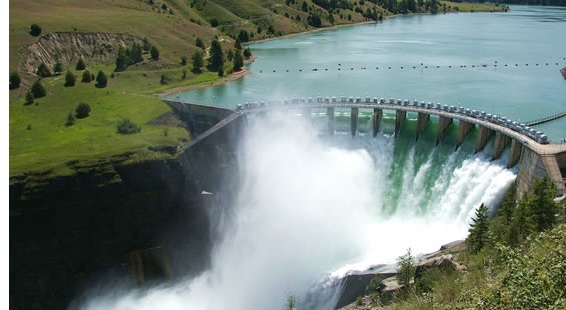

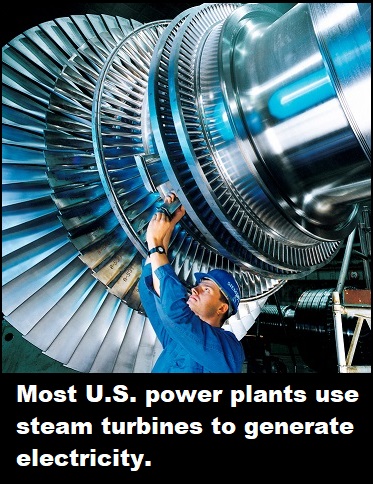 Water “use” by power plants comes in two forms: withdrawal and consumption. Withdrawal refers to the amount of water a power plant extracts from a lake, river, aquifer, or other water source. Power plants that use “once-through cooling” technology withdraw large volumes of water a single time. They then discharge it directly to waste.
Water “use” by power plants comes in two forms: withdrawal and consumption. Withdrawal refers to the amount of water a power plant extracts from a lake, river, aquifer, or other water source. Power plants that use “once-through cooling” technology withdraw large volumes of water a single time. They then discharge it directly to waste.
 There are several ways we can address the water-related impacts of energy use:
There are several ways we can address the water-related impacts of energy use: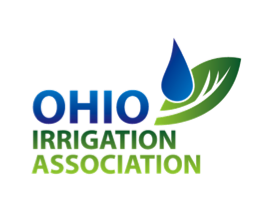
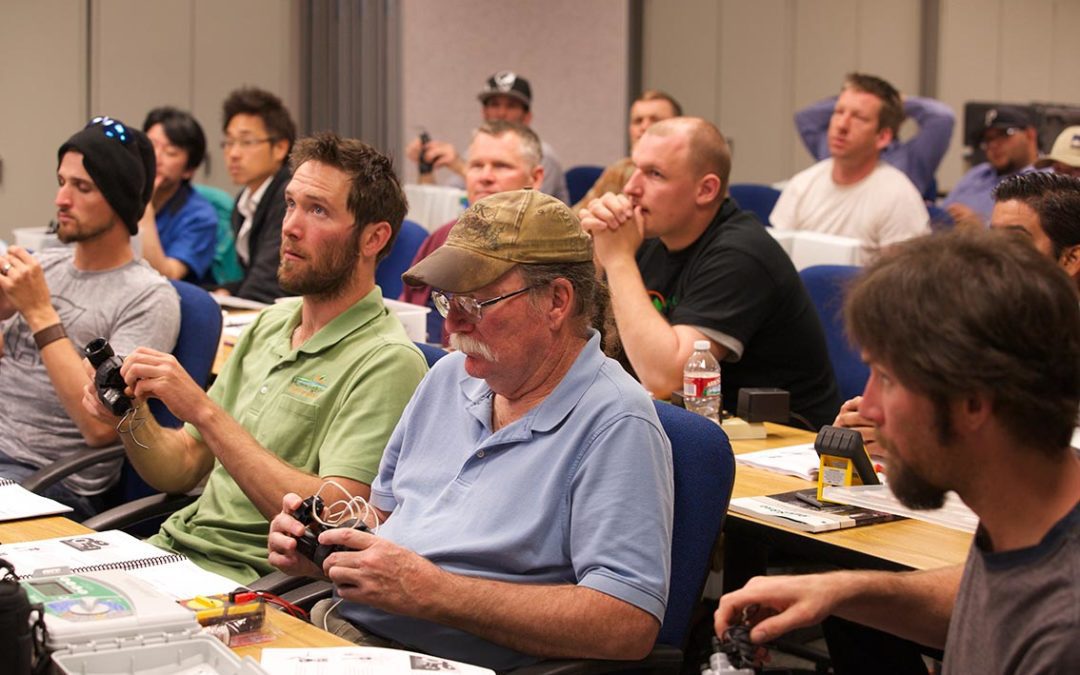
 Don’t miss out on this opportunity to add instant credibility to employers and increase your marketability, all while demonstrating your commitment to efficient water management!
Don’t miss out on this opportunity to add instant credibility to employers and increase your marketability, all while demonstrating your commitment to efficient water management! This entails knowing the limitations of different piping systems and understand basic hydraulics, in order to properly cut and join pipe.
This entails knowing the limitations of different piping systems and understand basic hydraulics, in order to properly cut and join pipe.

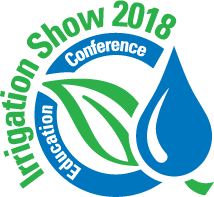
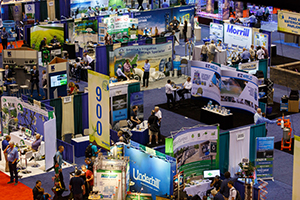 Extended Floor Hours
Extended Floor Hours
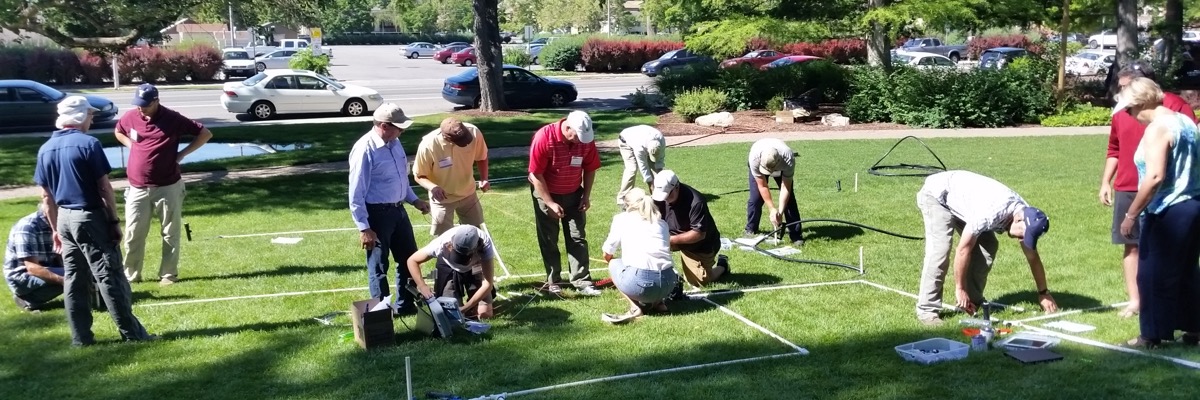
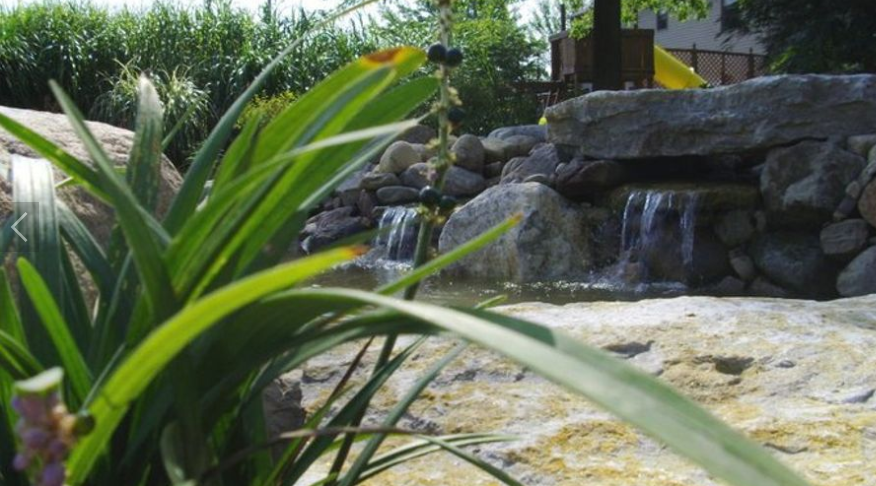
 We’re confident that Adam and his team will quickly appreciate the many
We’re confident that Adam and his team will quickly appreciate the many 
 The first event in the series, the
The first event in the series, the 

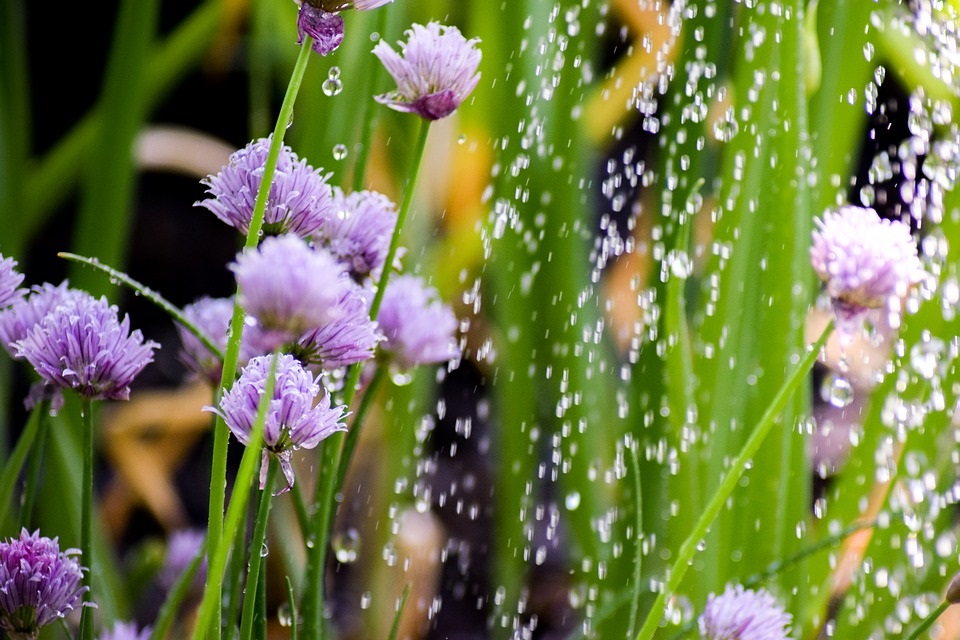
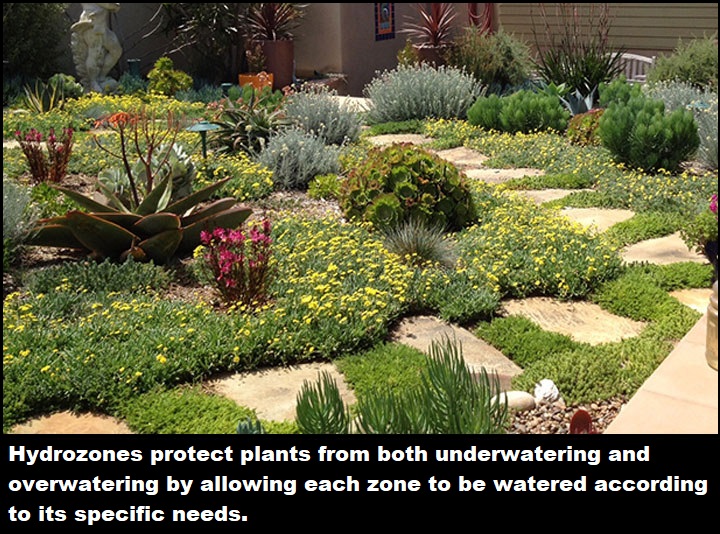
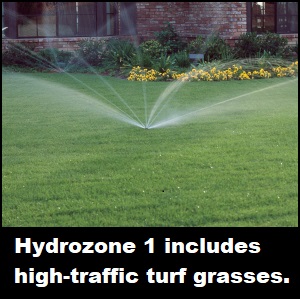 Early morning is considered the best time to water a lawn, with less chance for evaporation and wind loss. Conversely, try not to water your lawn late in the evening; the grass will stay wet all night, and become more susceptible to disease. When watering a lawn, be sure to wet the soil to a depth of 4 to 6 inches.
Early morning is considered the best time to water a lawn, with less chance for evaporation and wind loss. Conversely, try not to water your lawn late in the evening; the grass will stay wet all night, and become more susceptible to disease. When watering a lawn, be sure to wet the soil to a depth of 4 to 6 inches.
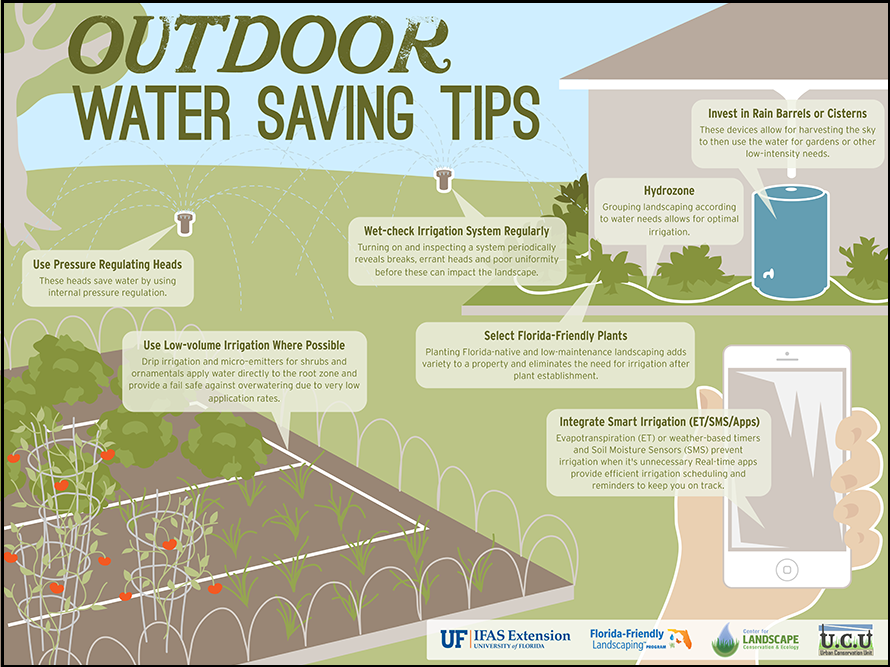
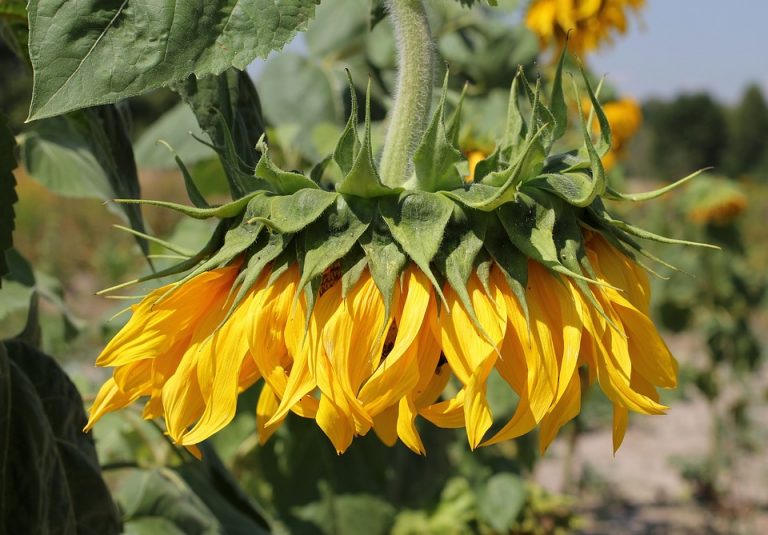

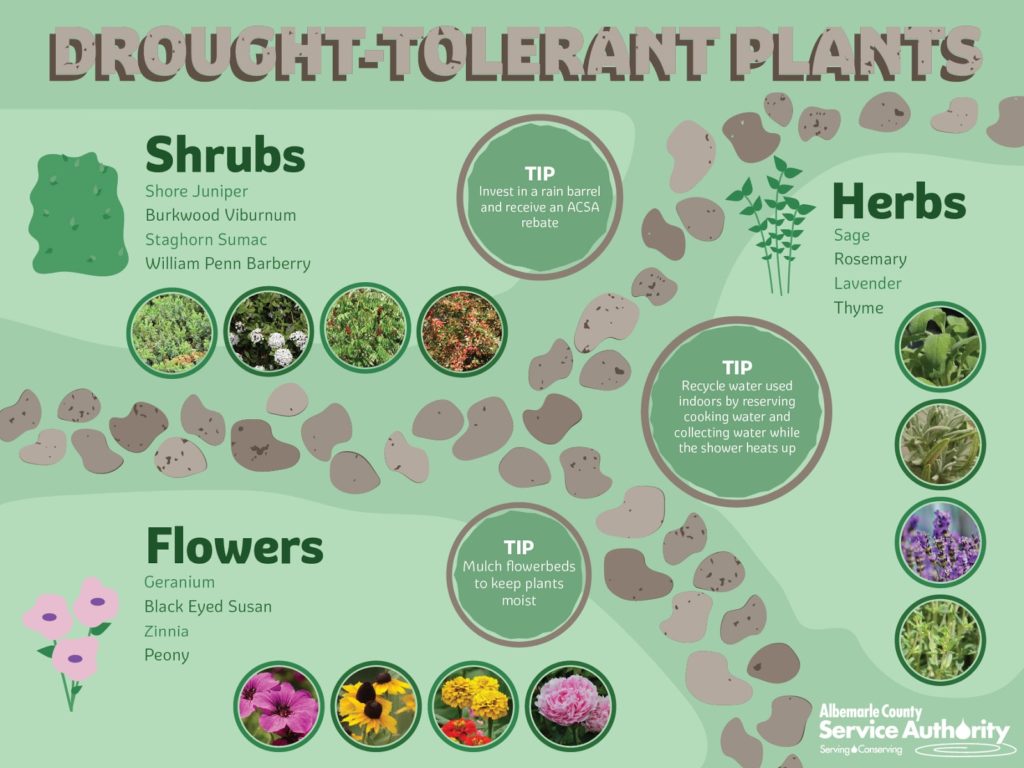
 Do not prune during or immediately following a drought. To do so would place too much stress on the plants. and send them into shock.
Do not prune during or immediately following a drought. To do so would place too much stress on the plants. and send them into shock.
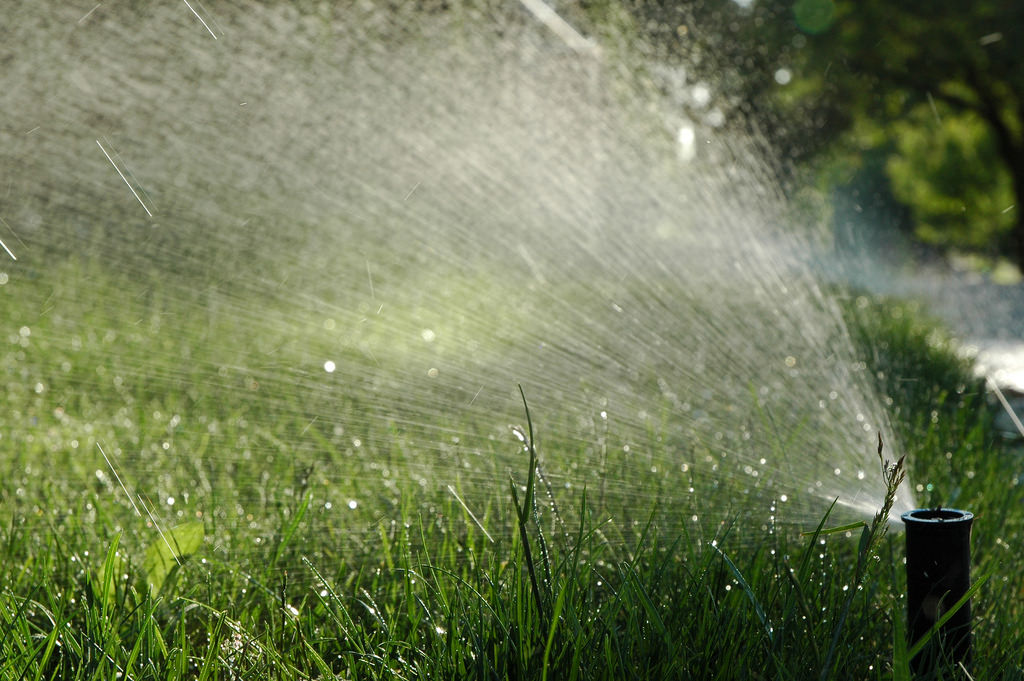
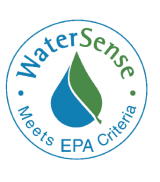
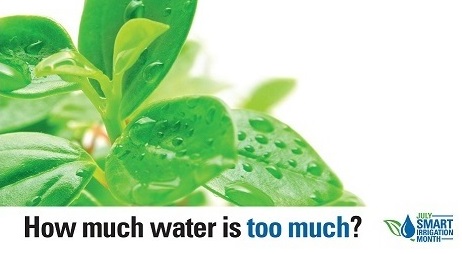 Alternatively, you can simplify this system by replacing your standard clock timer controller with a WaterSense-labeled
Alternatively, you can simplify this system by replacing your standard clock timer controller with a WaterSense-labeled 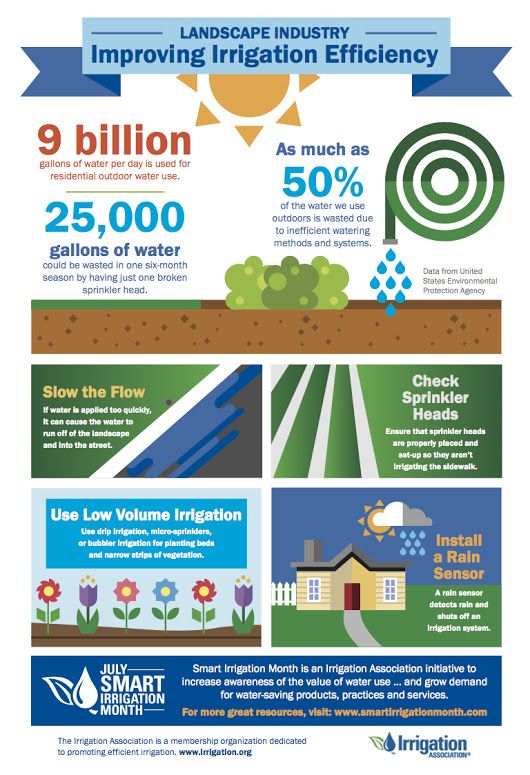

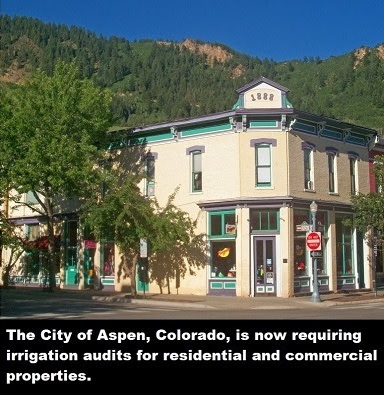 In order to address the lack of certified auditors in the area, Aspen city officials hope to establish a local training program.
In order to address the lack of certified auditors in the area, Aspen city officials hope to establish a local training program.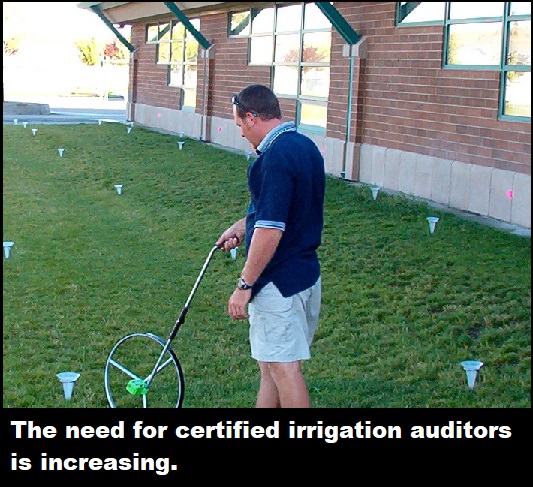
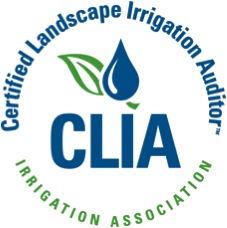 Have at least one year of professional experience
Have at least one year of professional experience